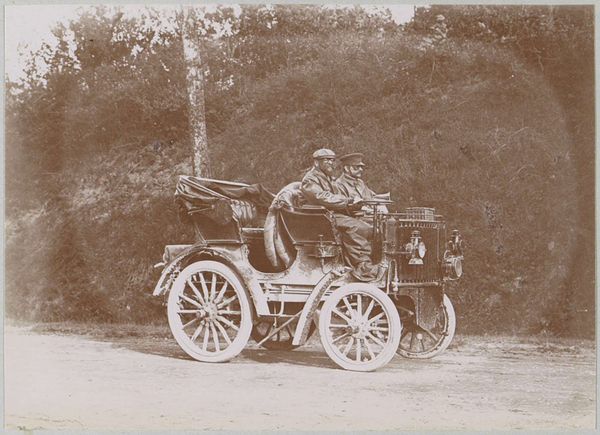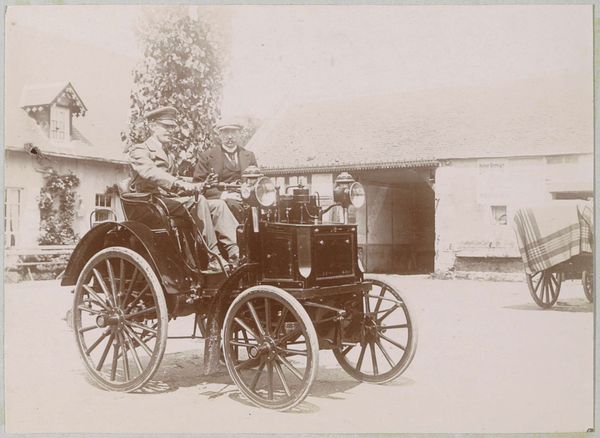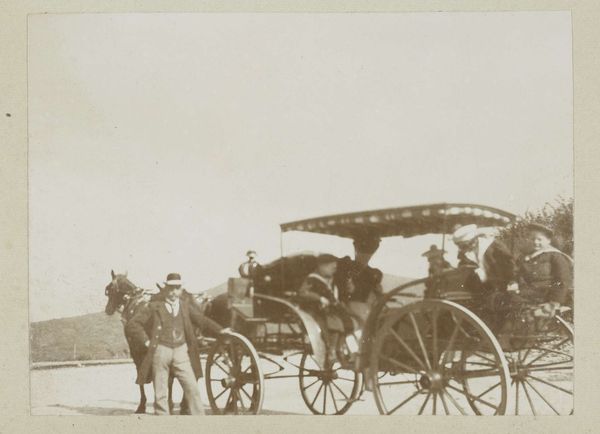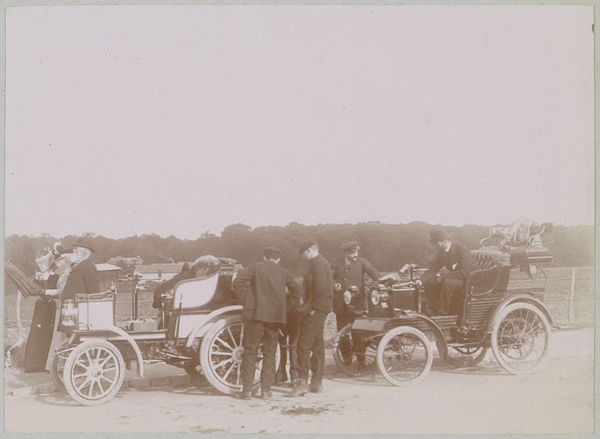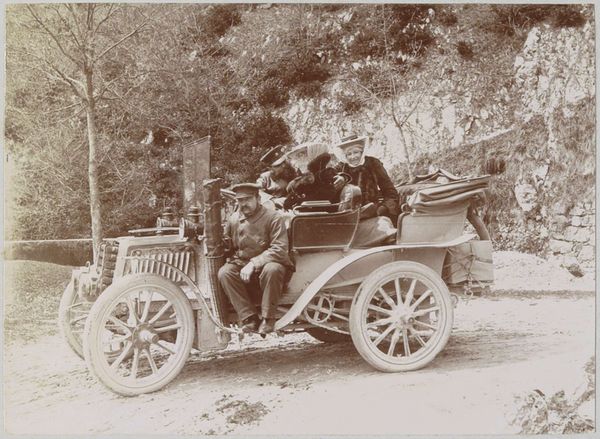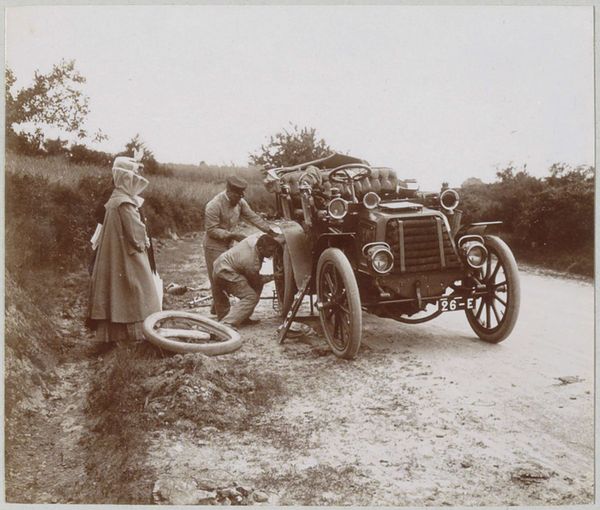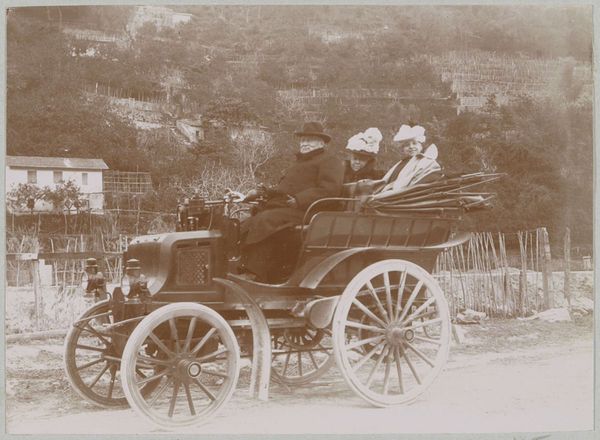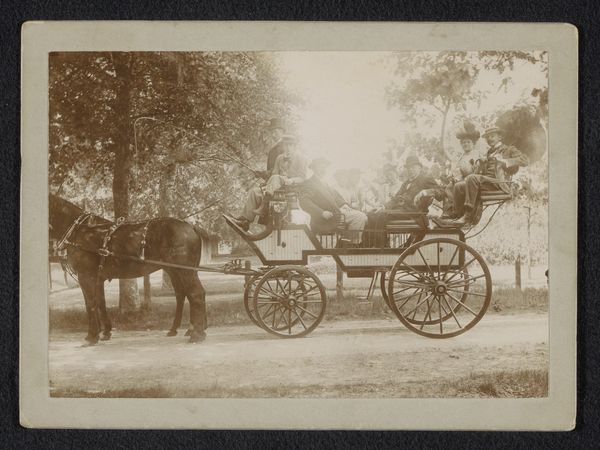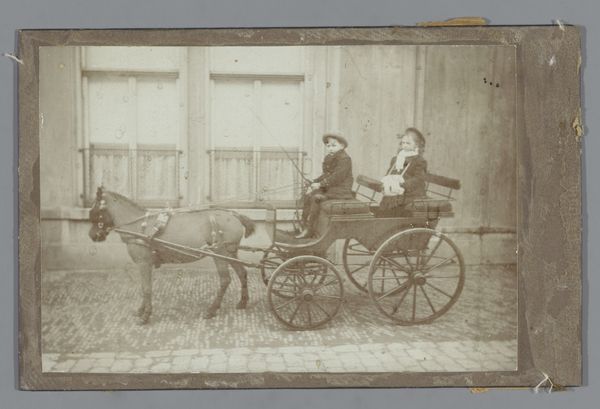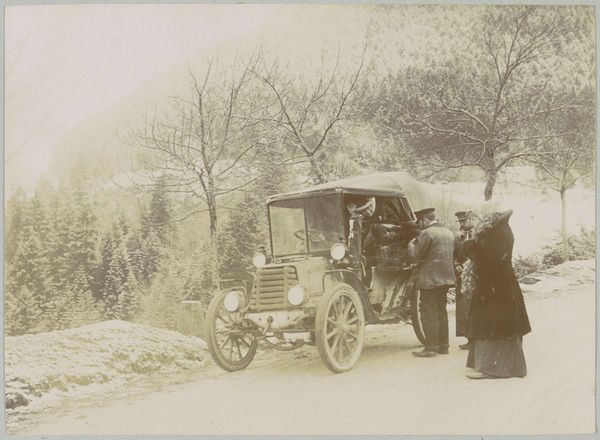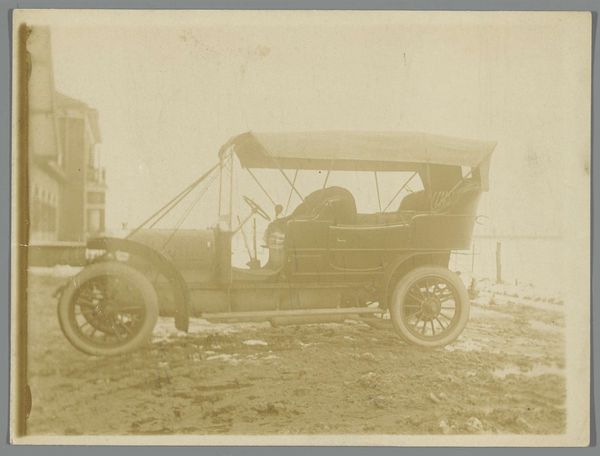
Gezelschap bij een automobiel in Frankrijk, waarschijnlijk tijdens een race voor Mors-automobielen 1898
0:00
0:00
delizy
Rijksmuseum
#
competition photography
#
outdoor environmental image
#
outdoor photograph
#
sport photography
#
outdoor loving
#
couple photography
#
holiday photography
#
outdoor activity
#
celebration photography
#
action sport photography
Dimensions: height 79 mm, width 109 mm
Copyright: Rijks Museum: Open Domain
This photograph, possibly taken by Delizy, captures a group gathered around a Mors automobile in France. Notice the wheel. The wheel is not merely a functional component but a potent symbol of progress, its form echoing the cyclical nature of time and destiny. Wheels have ancient roots—potter's wheels, chariots—and carry symbolic weight beyond mere transportation. Think of fortune's wheel, ever turning, lifting some while casting others down. Consider how the wheel, as a visual motif, recurs in various guises throughout art history, each iteration colored by its cultural context. In some, it signifies spiritual enlightenment; in others, relentless industrial advancement. Like an Ouroboros, the serpent that eats its tail, the wheel represents continuous renewal, its circular form a testament to the enduring human quest for motion and advancement. In our collective consciousness, the wheel engages deep, subconscious levels of meaning, evoking the perpetual push of progress. Thus, the wheel's journey is a testament to its resilience as a symbol, constantly reshaped yet eternally present in our cultural narrative.
Comments
No comments
Be the first to comment and join the conversation on the ultimate creative platform.
